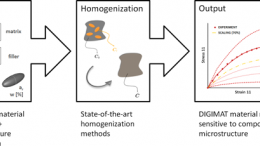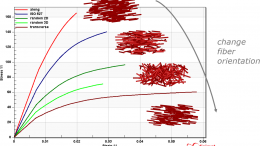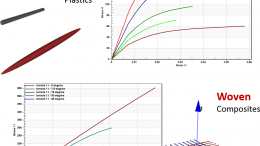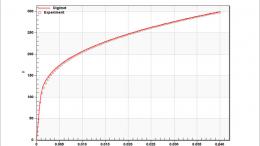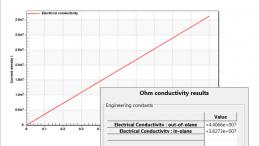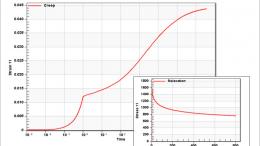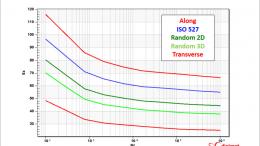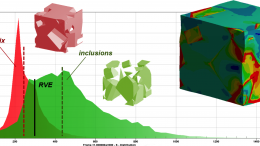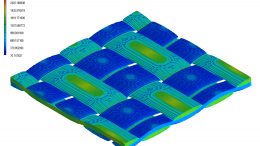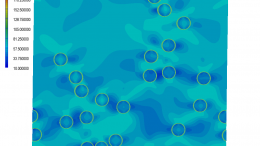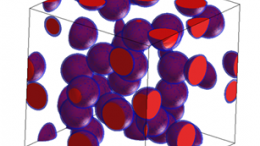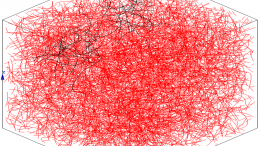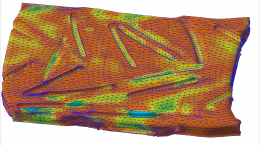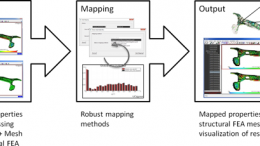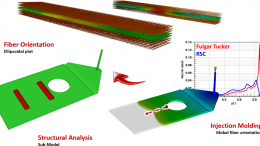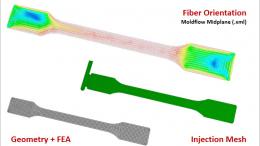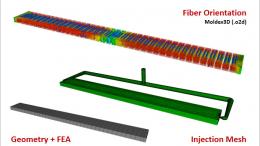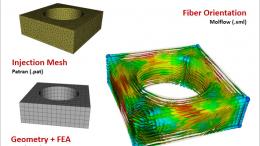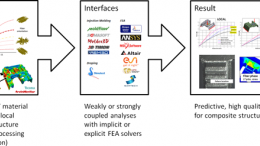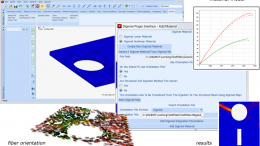
Digimat offers the tool to analyze your multiphase composite materials in an accurate, efficient and easy way!
Digimat-MF is a Tool of Digimat software to compute composite materials' performances

Digimat-MF is the mean field homogenization tool to rapidly compute the macroscopic performance of composite materials from their per-phase properties and microstructure definition. Digimat-MF aims at the realistic prediction of the non-linear constitutive behavior of multi-phase materials taking into account temperature and strain rate dependencies. The composite morphology such as filler content, length, aspect ratio and orientation take full impact on the resulting composite behavior. Digimat-MF is accurate, efficient and very easy to learn and use.
Digimat-MF is used mainly by universities, research institutes and material suppliers, as well as OEMs and Tier1s research departments.
Digimat Mean Field homogenization technology is especially well suited to describe fiber reinforced composites:
- Short fiber reinforced plastics
- Long fiber thermoplastics
- Unidirectional composites
- Woven composites
- Sheet Molding Compound
A broad range of performances can be predicted realistically with Digimat Mean Field homogenization technology :
- Stiffness
- Failure
- Creep
- Fatigue
- Conductivity (thermal & electrical)
The application of Digimat-MF and Digimat-FE paved the way for me to give an insight into the influence of microstructure on the overall mechanical and brittle damage behavior of highly porous sound absorbing ceramics. I was able to contribute to the improvement of material strength by new material design while keeping the good sound absorption."
-Reza Malekmohammadi, Research Assistant, BIME
Digimat-FE is a Tool of Digimat software to compute composite materials' performances using the Finite Element homogenization method.

Digimat-FE generates realistic (stochastic) Representative Volume Elements (RVEs) for a large variety of material microstructures and can as well rely on external geometric microstructure description such as micro CT-scan or molecular dynamic results.
Based on material input and the microstructure definition, a finite element model is built and run. Various solvers are accessible to perform simulations including an embedded FEA solver, a Fast Fourier Transform solver and external solvers. The results of the FE analysis is post-processed in the sense of probabilistic distribution functions that give detailed insight into the RVE. Mean homogenized values are computed and can be used in subsequent FE analysis on the structural part level.
Digimat Finite Element technology is an End-to-end Tool for composite materials simulation:
A complete end-to-end solution has been implemented in Digimat®. It allows performing all the different steps needed to obtain a complete FE analysis - starting from the material data. For example for woven composites those steps are:
- Extraction of the material data from the datasheet
- Mean-field homogenization of the yarns
- Generation of a geometry of a unit cell
- Generation of a RVE
- Voxelisation
- FE model definition and application of periodic boundary conditions
- Solving the FE analysis
- Post-processing the outputs of the FE analysis
Digimat enables us to perform in depth studies of complex and realistic microstructures. As an investment in the future we base our simulation approach on the Digimat software, both for our research and the education of a new generation of simulation engineers who will be experts in the modeling of material."
-Prof. Vasily Ploshikhin, Airbus endowed chair for Integrative Simulation and Engineering of Materials and Processes (www.isemp.de)
Extremely complex material microstructure morphologies can be realized and a broad range of materials can be addressed:
- Plastics
- Rubbers
- Metals
- Ceramics
- Nano-filled materials
- Foams
Digimat-MX is the database Tool of Digimat software to store anisotropic measurements and related micromechanical models.

The Digimat-MX Tool stores anisotropic measurements and related micromechanical models. Embedded parameterization tools allow to adapt the material performance according to the experiments. Resulting Digimat models can be shared within large communities of different users. The MX material database operates with full interactivity for Digimat tools and solutions. Intellectual property is assured by built-in encryption technology.
Digimat-MX materials database comes along with:
Public Materials Database:
- Ready-to-run Digimat material models
- Experimental data as a base for building Digimat material models
Private Materials Database setup & tools:
- Flexible user/group scenarios
- Data import & reverse engineering of Digimat material models
- Encryption technology for secured sharing
Digimat-MX is used by all major material suppliers, OEMs and Ter1s from different industries, as well as by universites and research institues.
Victrex has delivered metal replacement solutions to the aerospace, automotive, energy, electronics, industrial and medical markets for more than three decades. One of the common themes across each of these industries continues to be the need for lighter, smarter, and more cost-effective solutions. Being proactive to support our customers in the replacement of metals, we have significantly enhanced our part modeling and evaluation capabilities by adding VICTREX® PEEK polymers to Digimat-MX. This will certainly accelerate the development process and help to deliver innovative solutions that perform in the most demanding environments."
-Frank Schemm, Global Sales–Aerospace SBU, Victrex
Digimat-MAP is the mapping Tool of Digimat software used to transfer Material data between dissimilar meshes.
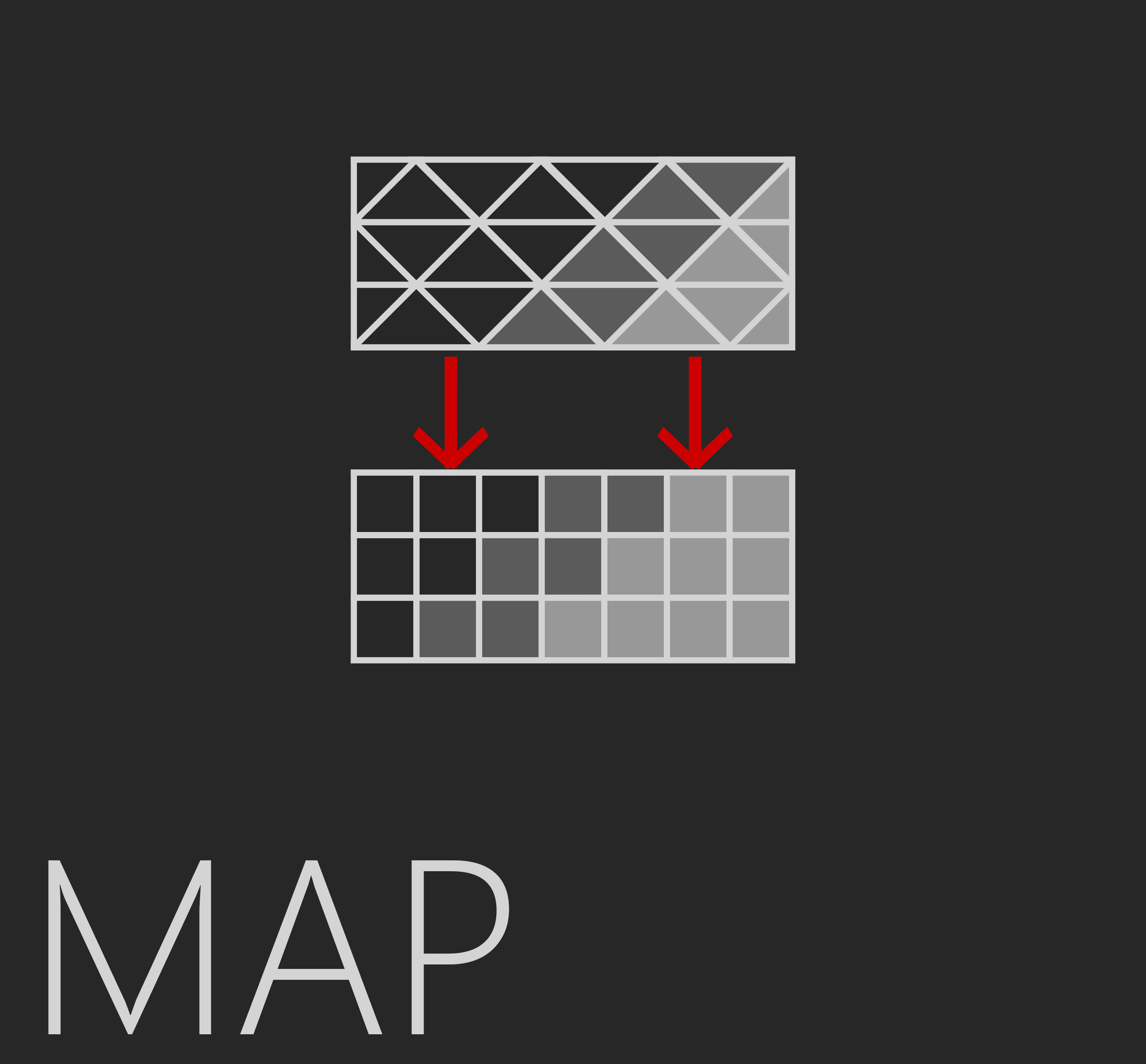
Digimat-MAP Mapping capabilities include the:
- Flexible superposition of meshes
- Transfer of data between meshes (e.g. fiber orientations, residual stresses, temperatures or locations of weld lines)
- Quality assessment by local and global error analysis
- Post-processing of mapping results by microstructure and in-depth investigation of the local material stiffness and response
Digimat-MAP offers a rich set of embedded tools to allow full control over the workflow:
Manipulation of meshes with Digimat-MAP
- Measurement of positions, distances & angles
- Manual superposition
- Automatic superposition
Transfer of Mapping data
- Fiber orientation, volume fraction & aspect ratio
- Temperature
- Residual stresses
- Location of weldlines
Quality Assessment of Mapping
- Global & local error indicator
Visualization & Post-Processing with the Mapping Tool
- Display of mapped microstructure (scalar, tensor vector & ellipsoidal plot)
- Investigation of local stiffness
Please visit the below pages for further information to find out which interfaces are supported in Digimat-MAP :
- To FEA software
- To Injection Molding software
- To Draping Simulation software
- To Fatigue software (performing lifetime prediction simulation)
- To Computer Tomography software
Digimat-CAE is a tool that bridges the material data gap between composite material processing and the final performance of composite structural parts.
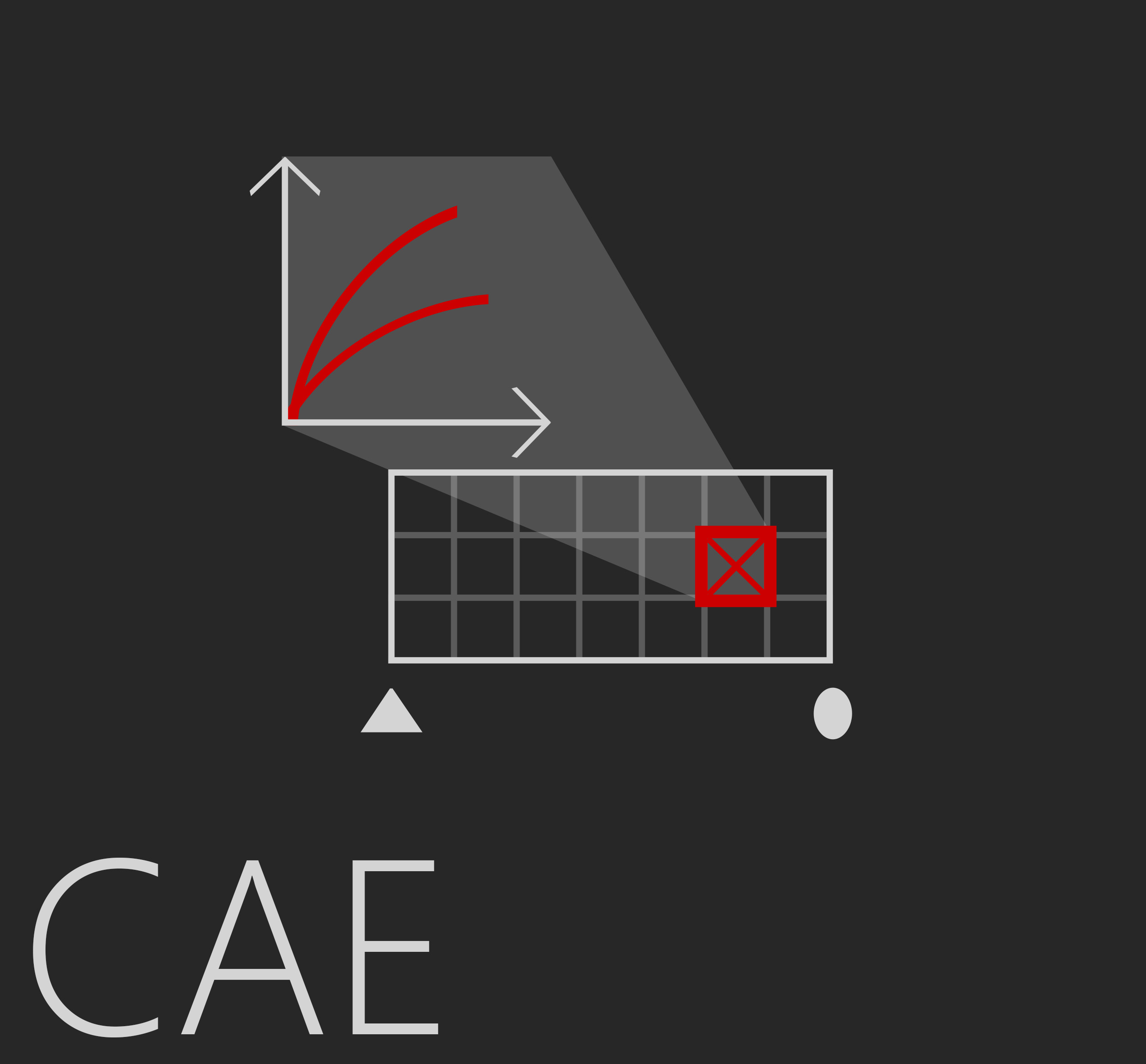
Digimat-CAE is the central tool for building coupled multi-scale analyses based on the manufacturing process. It centralizes the upstream and downstream interfaces for Digimat material models.
Local microstructure is taken into account and translated into a macroscopic material response. This results in a highly accurate prediction of the final performance of the composite part.
A multi-scale interface to integrate Material data into the design workflow:
Digimat-CAE offers GUI guidance for the set-up of integrative simulations and supports this approach via embedded Plug-Ins for GUI guidance in native FEA environments. Choices of Digimat multi-scale solution methods (Micro/Hybrid/Macro) allow to balance individually the need for accuracy and fast computational time.
- Micro: the most accurate solution that produces per phase results
- Hybrid: the solution that allows to obtain accurate prediction in a realistic industrial time frame - in average 10x quicker then Micro solution
- Macro: the dedicated solution for SFRP elastic material
Please visit the below pages for further information to find out which interfaces are supported in Digimat-CAE :
- To FEA software
- To Injection Molding software
- To Draping Simulation software
- To Fatigue software (performing lifetime prediction simulation)
- To Computer Tomography software

